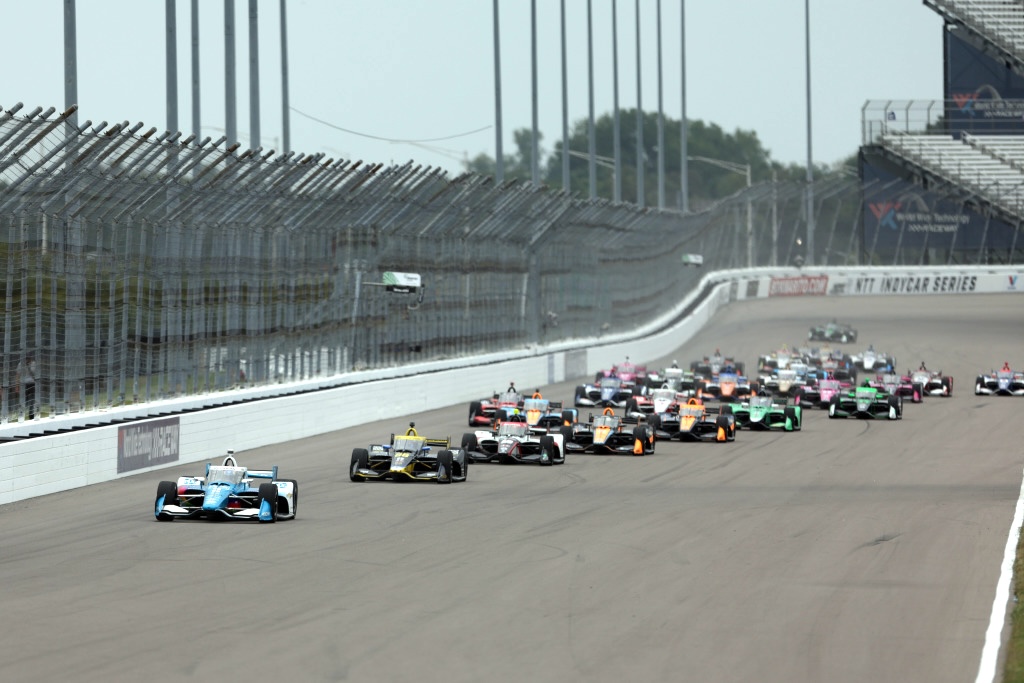NASCAR president Steve Phelps has told 23XI Racing that “NASCAR has made several concessions and compromises” while negotiating the 2025 Charter Agreement, in a letter signed by Phelps to the organization last month.
The letter was part of the exhibits released Wednesday when a preliminary injunction was filed by 23XI Racing and Front Row Motorsports. 23XI and FRM are seeking to race as charter teams in 2025 as the legal process plays out, but without giving up their antitrust claims.

Phelps wrote that:
– NASCAR agreed to meet well in advance of the timeline outlined in the existing charter agreement to begin good faith renewal obligations
– NASCAR agreed to extend the term length beyond the current media rights agreement
– NASCAR agreed to renewal right protections
– NASCAR created a team advisory committee to solicit additional input from the teams on major strategic decisions for the industry
– NASCAR absorbed all costs of hosting and maintaining the team website on NASCAR’s platform
– NASCAR lowered the transfer fee from the initial proposal
– NASCAR waived the debt limits, increased the amount of private equity participation, and worked with teams around the transfer language
– NASCAR agreed to increase the financial position of the teams, making them the largest beneficiary of the media revenues to the financial detriment of other industry stakeholders.
The correspondence is the only insight into NASCAR’s approach to the matter as they have not issued a public statement on the lawsuit. 23XI and Front Row are represented by Jeffrey Kessler of Winston & Strawn while NASCAR is represented by Chris Yates of Latham & Yates.
[lawrence-auto-related count=3 category=1428]
Phelps went on to address 23XI Racing’s claim that NASCAR did not negotiate in good faith with the team negotiation committee (TNC). He said NASCAR, through comments from team owners, “became concerned” that all teams were not being accurately informed by the TNC and therefore began negotiating with teams individually. NASCAR and the TNC had been negotiating for two years on a new charter agreement.
“We feel this approach yielded a more balanced document reflecting the concerns and positions of all the charter owners,” wrote Phelps.
Phelps then went on to address specific concerns raised by 23XI Racing. The organization sent NASCAR a letter dated Sept. 6, signed by co-owners Denny Hamlin and Michael Jordan, about its concerns over the new charter agreement. Among them was that “we will not provide team IP rights to NASCAR unless there is a negotiation that results in a meaningful share of revenue generated by those IP rights.”
Phelps responded that NASCAR will not use team IP rights outside of the rights traditionally granted for participation in the event (e.g., live and re-air rights and licensing works, etc.). If NASCAR wanted to use them beyond those rights, they would work through the new business process.
However, Phelps said the two sides cannot agree on 23XI wanting “reasonable protection rights regarding unilateral decisions by NASCAR that increase fees and costs to compete in the Cup Series by a material dollar amount.”
Said Phelps, “NASCAR has established the team advisory committee so that teams can provide input to NASCAR regarding costs and other changes; however, NASCAR needs to have the ability to govern the sport.”
23XI gave NASCAR eight points it wanted changed in the charter agreement. Phelps believes seven of them may have been resolved and “we appreciate your acknowledgement that failing to agree on all points Is not a failure to negotiate in good faith.”
To end the letter, Phelps wrote at length, “Michael and Denny, we sincerely hope that you renew your Charter Agreement as we feel that is a valuable asset for your Team(s). NASCAR needs to finalize the Charter and Open team ownership structure ratio for planning purposes for both NASCAR and other industry stakeholders for the 2025 seasons as this information is required for NASCAR to prepare its documentation…

“As you may have heard, the other Charter Teams are already in the process of planning with NASCAR regarding how we move forward and grow together in 2025. Therefore, we will need to have an executed Charter Agreement(s) no later than close of business (5pm ET) on Friday, September 20, 2024. Obviously, if you choose not to execute your Charter Agreement(s) then you’re welcome to race in the 2025 NASCAR Cup Series as an open team and we will be happy to forward you that documentation. Whether you renew or not, NASCAR looks forward to working with you in 2025 and beyond.”
23XI Racing has not signed a Charter Agreement. The antitrust lawsuit was filed Oct. 2 in North Carolina.


